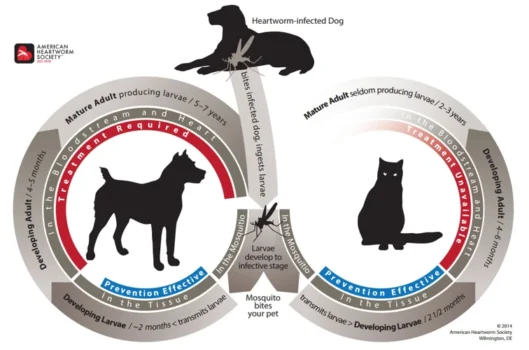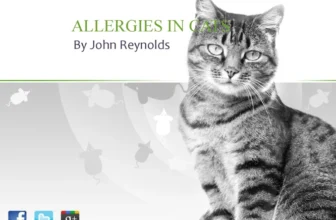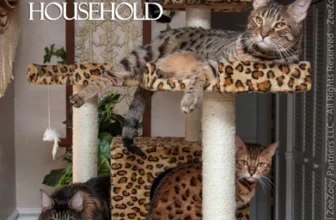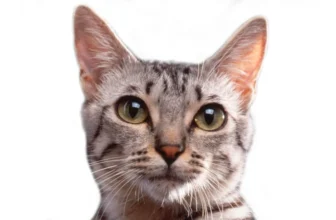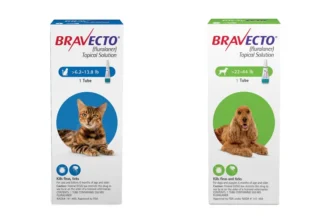Introduction
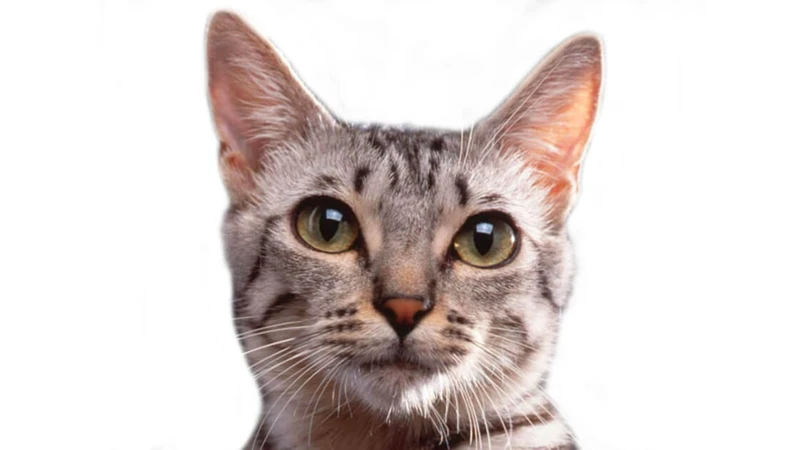
As a California Spangled owner, you want to ensure that your beloved feline stays healthy and happy. One way to do this is to prevent heartworm disease, a serious condition that can be fatal if left untreated. In this section, we will go over the ins and outs of heartworm disease in California Spangled, its transmission, symptoms, prevention methods, and treatment options. By following these guidelines, you can help keep your furry friend free of heartworm disease and enjoy many happy years together.
What is Heartworm Disease?
Heartworm disease is a serious and potentially fatal disease caused by parasitic worms that can affect California Spangled cats. This disease is spread through the bite of an infected mosquito, making California Spangled that spend time outdoors more susceptible to infection. Once infected, the worms mature and can end up living in the heart and lungs, causing severe damage. According to the importance of parasite prevention for California Spangled, it is crucial to prevent heartworm disease to keep California Spangled healthy and happy.
The lifecycle of heartworms has several stages and can take up to six months to develop. As the worms mature, they move towards the heart and lungs, where they can cause serious damage. An infected California Spangled may not show any signs until the worms have matured and started to cause damage. Some of the symptoms that can develop include coughing and wheezing, fatigue, and difficulty breathing, as discussed in more detail in the following sections.
Here’s a table summarizing important information about heartworm disease:
| What is it? | Heartworm disease |
| What causes it? | Parasitic worms spread by mosquitoes |
| How is it transmitted? | Through the bite of an infected mosquito |
| What are the symptoms? | Coughing and wheezing, fatigue, difficulty breathing |
| How is it prevented? | Yearly testing, monthly preventative medication, mosquito control measures, indoor living |
| What is the treatment? | Medication, surgery, recovery and follow-up |
It is important to note that while heartworm disease is most commonly associated with dogs, it can also affect cats, including California Spangled. As with many other types of parasites, the best way to prevent heartworm disease is through regular preventative care. In addition to heartworm preventative medication, it’s important to keep California Spangled safe from other parasites as well. Flea and tick control and other parasite control methods can help keep California Spangled healthy and happy. You may also consider natural remedies for parasite control in California Spangled.
Why is it Important to Prevent Heartworm Disease in California Spangled?
Heartworm disease is a serious and potentially fatal disease that can affect California Spangled cats. It’s important to take preventive measures to protect your furry friend from this disease. Let’s explore why it’s critical to prevent heartworm disease in California Spangled cats.
| Reason | Explanation |
| High Mortality Rate | Heartworm disease can be fatal if left untreated, and the treatment can be expensive, complicated, and can have serious side effects. Prevention is key. |
| Limited Treatment Options | As mentioned previously, treating heartworm disease is a complex process that can involve surgery or medications that have potentially harmful side effects. Prevention is a better option. |
| Prevent Further Transmission | The American Heartworm Society states that heartworm disease is preventable through proper use of preventive medications. These medications also prevent the spread of the disease. |
| Protect Your Pet’s Health and Quality of Life | Heartworm disease can have serious impacts on the health and quality of life of your California Spangled cat. Taking the necessary preventive measures can protect your pet’s health and prolong their life. |
It’s essential to prioritize heartworm prevention in California Spangled cats to avoid the high mortality rate of the disease and ensure your furry friend’s health and happiness. To know more about common parasites found in California Spangled cats, please refer to our article on cali-spangled-parasites. And if you want to learn some tips to prevent parasites at home, refer to our article on parasites-at-home-california-spangled.
How is Heartworm Disease Transmitted?
Heartworm disease in California Spangled is transmitted by the bite of an infected mosquito that carries heartworm larvae from an infected animal to a healthy one. Once the mosquito bites the healthy animal, the heartworm larvae are deposited into the bloodstream of the animal, where they develop and grow into mature worms within months.
The following are key points to remember about how heartworm disease is transmitted:
- Heartworm disease cannot be transmitted directly from animal to animal.
- Heartworm disease needs a mosquito as a carrier to transmit the disease from an infected animal to a healthy one.
- The heartworm larvae develop into mature worms in approximately 6 months after being deposited into the bloodstream of the animal.
- Heartworm disease can be found in dogs, cats, and other mammals, including wild animals such as coyotes and foxes.
- Mosquitoes can transmit the disease year-round, even during colder months, as long as temperatures remain above freezing.
- Heartworm disease is more prevalent in warmer, humid environments that are conducive to mosquito proliferation.
Given the prevalence of heartworm disease, it is essential to take preventative measures to protect your California Spangled. Monthly heartworm preventative medication and mosquito control measures must be diligently implemented to reduce the risk of your pet contracting heartworm disease.
Symptoms of Heartworm Disease in California Spangled

As a California Spangled owner, it’s essential to understand the symptoms of heartworm disease to ensure that your furry friend stays healthy and happy. Unfortunately, heartworm disease in California Spangled can be challenging to diagnose, as signs may not manifest initially. However, several indications can alert you that your cat may have contracted heartworm disease. Keep reading to learn more about the symptoms you should be aware of.
Coughing and Wheezing
When a California Spangled cat is infected with heartworm disease, they may experience a range of symptoms that can indicate the presence of the parasite in their body. One of the most common symptoms is coughing and wheezing, which can be caused by the inflammation of the lungs and airways.
Coughing: The infected cat may have a persistent cough that worsens over time, especially after physical activity. This cough is often described as a dry, hacking sound that may sound like the cat is trying to clear something from its throat.
Wheezing: In some cases, the inflamed airways caused by the parasite can cause wheezing – a high-pitched, whistling sound that occurs during breathing. This can be especially noticeable when the cat is at rest or after exertion.
Other symptoms of heartworm disease in California Spangled cats may include fatigue and reduced activity levels, difficulty breathing, weight loss, vomiting, and diarrhea. It is important to note that some cats may not show any symptoms until the disease has progressed to a more severe stage, which is why yearly heartworm testing is crucial for early detection and treatment.
If your California Spangled cat is showing any of these symptoms, it is important to take them to a veterinarian as soon as possible for diagnosis and treatment. Early intervention can improve the likelihood of a successful outcome and prevent further damage to the cat’s body.
Fatigue and Reduced Activity Levels
Heartworm disease can cause many symptoms in California Spangled, including fatigue and reduced activity levels. The worms living in the heart and lungs can make it difficult for the cat to breathe and cause the heart to work harder, which can cause feelings of exhaustion and lethargy.
In addition to fatigue, other symptoms of heartworm disease in California Spangled can include coughing and wheezing, difficulty breathing, and weight loss. These symptoms can vary depending on the severity of the infestation and how long the cat has been infected.
It is important to keep a close eye on your cat’s behavior and energy levels, especially during mosquito season. If you notice any of these symptoms, it is important to take your California Spangled to the vet for a heartworm test. Early detection and treatment can prevent the disease from causing severe damage to your cat’s health.
Here is a table summarizing the symptoms of heartworm disease in California Spangled:
| Symptoms of Heartworm Disease in California Spangled |
|---|
| Coughing and wheezing |
| Fatigue and reduced activity levels |
| Difficulty breathing |
| Weight loss |
As you can see, fatigue and reduced activity levels are just one of the many symptoms of heartworm disease in California Spangled. If you notice any of these symptoms in your cat, it is important to take them to your vet for a heartworm test and to closely follow prevention techniques to protect your cat from this serious and potentially fatal disease.
Difficulty Breathing
When a California Spangled has heartworm disease, one of the most concerning symptoms is difficulty breathing. This is caused by the presence of worms in the heart and lungs, which can obstruct the flow of blood and air through the body. As a result, your cat may struggle to catch their breath, especially after exercise or during times of stress.
If you notice your California Spangled experiencing difficulty breathing, it is important to seek veterinary attention immediately. This symptom can be a sign of a more advanced case of heartworm disease, and prompt treatment can make all the difference. During your veterinary visit, your cat may undergo a number of tests to determine the extent of the disease and the best course of treatment.
Some treatment options for difficulty breathing caused by heartworm disease may include medication or even surgery, depending on the severity of the case. Your veterinarian may also recommend keeping your California Spangled in a calm, quiet environment to reduce stress and manage symptoms.
Here are some other signs to watch for:
- Coughing and wheezing
- Fatigue and reduced activity levels
Remember, the best way to protect your California Spangled from heartworm disease is to be proactive with prevention techniques. With regular testing, monthly medications, and mosquito control measures, you can help keep your cat healthy and happy for years to come.
Prevention Techniques for California Spangled
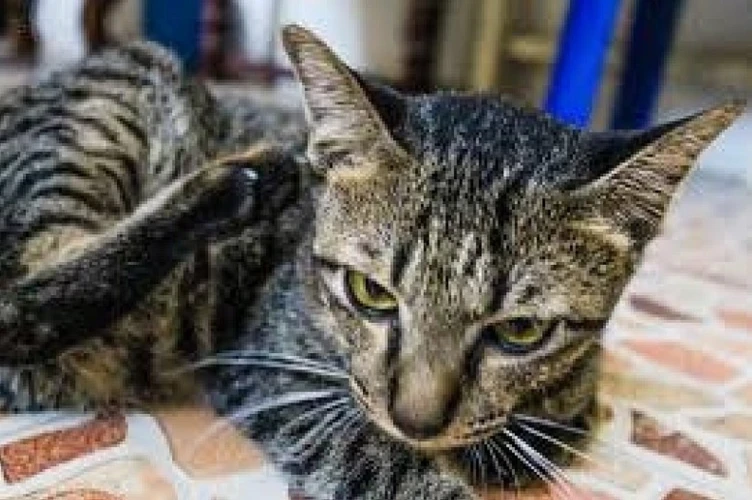
When it comes to preventing heartworm disease in California Spangled cats, there are several techniques that can be implemented to ensure their safety and comfort. From yearly testing to medication and mosquito control measures, there are various ways to maintain the health of your feline friend. Keep reading to discover some prevention techniques that will keep your California Spangled safe from heartworm disease and its harmful effects.
Yearly Heartworm Testing
Annual heartworm testing is an essential step in preventing heartworm disease in California Spangled cats. During the test, a veterinarian will take a small blood sample from the cat and test it for the presence of heartworms. The test is quick and easy, and the results are usually available within a few minutes.
Why is Yearly Heartworm Testing Important?
Heartworms can be deadly if left untreated and are often not easily detectable until they have caused significant damage to a cat’s heart and lungs. Yearly testing ensures that any heartworm infection can be detected early, when it is still treatable.
Monthly heartworm preventative medication can lower the risk of infection, but it is not 100% effective. Yearly testing ensures that if a cat is infected, it can be treated promptly and effectively, preventing further damage to its health.
What Happens During the Test?
During the test, a veterinarian will draw a small amount of blood from the cat’s vein and test it for antigens produced by adult female heartworms. If the test is positive, it means the cat has at least one adult female heartworm. Additional testing may be necessary to confirm the diagnosis and determine the severity of the infection.
When Should Testing Be Done?
Yearly heartworm testing should be done during a cat’s regular check-up with a veterinarian. It is especially important to test annually if the cat is not on a regular heartworm prevention regimen or if there has been a lapse in maintaining the preventative medication schedule.
What are the Benefits of Testing?
There are many benefits to yearly heartworm testing, including:
– Early detection and treatment of heartworm infection, increasing the chances of a successful recovery
– Prevention of serious health complications
– Ensuring that heartworm prevention methods are working as intended
– Providing peace of mind that your California Spangled cat is healthy and well-protected from heartworm disease
| Advantages of Yearly Heartworm Testing |
|————————————–|
| Early detection and treatment of heartworm infection |
| Prevention of serious health complications |
| Ensuring that heartworm prevention methods are working effectively |
| Provides peace of mind that your cat is healthy and well-protected from heartworm disease |
Taking preventative measures and scheduling yearly heartworm tests with a trusted veterinarian is crucial in ensuring the long-term health and well-being of your California Spangled cat.
Monthly Heartworm Preventative Medication
Monthly heartworm preventative medication is a highly effective way to protect your California Spangled against heartworm disease. This treatment involves giving your cat a monthly dose of preventive medication, which can come in the form of oral tablets or topical applications.
The medication works by killing off any heartworm larvae that might have been transmitted through mosquito bites before they are able to develop into adult worms that can damage your cat’s heart and lungs. Starting a prevention program early in your cat’s life can help ensure that it never contracts heartworm disease, which can be difficult and expensive to treat.
Table:
| Benefits of monthly heartworm preventative medication for California Spangled: |
|---|
| • Highly effective in preventing heartworm disease |
| • Easy to administer in both oral and topical forms |
| • Helps avoid costly and time-consuming heartworm treatment |
| • Protects your cat’s heart and lungs from damage |
| • Can be started as early as 8 weeks of age |
It is important to note that while monthly heartworm preventative medication is highly effective, it must be administered on a regular basis to achieve maximum protection. Missing even one dose could leave your cat vulnerable to a heartworm infection. It is also important to consult with your veterinarian to determine the appropriate medication and dosage for your California Spangled based on factors such as age, weight, and overall health.
In addition to administering monthly medication, it is also recommended to have your cat tested for heartworms at least once a year, even if they are receiving preventive medication. This will help ensure that the medication is working effectively and that any heartworm infection is caught early before it progresses to a more serious stage.
Remember, prevention is key when it comes to protecting your furry friend from heartworm disease. Make sure to consult with your veterinarian and establish a regular preventive care routine that includes monthly medication and yearly testing.
Mosquito Control Measures
Mosquitoes are the primary carrier of heartworm larvae, and controlling mosquito populations can significantly reduce the risk of infection in California Spangled cats. Here are some effective mosquito control measures that can be taken:
- Eliminate Breeding Grounds: Mosquitoes breed in stagnant water, so it’s crucial to eliminate any standing water around your home. Check for areas of pooling water and empty any containers or objects that collect water. Ensure there are no clogged gutters or outdoor drainage areas that can create stagnant water areas.
- Mosquito Repellent: Consider using cat-safe mosquito repellent around your California Spangled pet’s living space. A repellent can help prevent mosquito bites, reducing the risk of your cat contracting heartworm disease. There are many mosquito repellent options that can effectively repel these insects.
- Use Mosquito Traps: Mosquito traps are an excellent tool in controlling mosquito populations. They release substances that attract mosquitoes and trap them in the device, effectively reducing the number of mosquitoes around your home and your California Spangled pet.
- Encourage Natural Predators: Encouraging natural predators, such as fish or birds that eat mosquitoes, can significantly reduce mosquito populations around your home. Consider placing birdhouses or bird baths and planting vegetation that can attract birds that feed on mosquitoes.
- Screening and Netting: It’s important to ensure your California Spangled’s living area is properly screened to prevent mosquitoes from entering and biting them. Netting and screens can keep mosquitoes at bay while still allowing fresh air to circulate.
By implementing these mosquito control measures, you can protect your California Spangled from heartworm disease and other mosquito-borne illnesses. Additionally, it’s essential to continue monthly heartworm preventive medication to decrease the risk of infection even further.
Indoor Living
One effective technique to prevent heartworm disease in California Spangled is by keeping them indoors as much as possible. This reduces their exposure to mosquitoes, which are the carriers of heartworm larvae. While it may not be possible to keep your cat completely indoors, there are some steps you can take to limit their exposure to mosquitoes.
Use Screens: Make sure that your windows and doors have screens in good condition. This will keep mosquitoes from getting inside your home and protect your beloved California Spangled from getting bitten.
Eliminate Standing Water: Mosquitoes breed in stagnant water, so it is important to eliminate any standing water in your home or yard. Make sure that your gutters are clean and that there are no areas where water is collecting.
Avoid Being Outdoor During Peak Mosquito Hours: Mosquitoes are most active during dawn and dusk. Try to keep your cat indoors during these times to prevent them from getting bitten by mosquitoes.
Use Indoor Mosquito Traps: Invest in indoor mosquito traps to help reduce the mosquito population inside your home. These traps use a variety of methods, such as carbon dioxide or UV light, to lure mosquitoes into the trap, where they are then captured and killed.
Use Mosquito Repellent: There are a variety of mosquito repellent products available on the market, including sprays, candles, and plug-ins. Make sure the product is safe for cats before using it in your home.
By following these indoor living strategies, in combination with other prevention techniques, you can significantly reduce the risk of heartworm disease in your California Spangled.
| Indoor Living Prevention Techniques | Description |
|---|---|
| Use Screens | Make sure that your windows and doors have screens in good condition. |
| Eliminate Standing Water | Ensure that there are no areas where water is collecting. |
| Avoid Being Outdoor During Peak Mosquito Hours | Try to keep your cat indoors during dawn and dusk. |
| Use Indoor Mosquito Traps | Invest in indoor mosquito traps to help reduce the mosquito population inside your home. |
| Use Mosquito Repellent | Make sure the product is safe for cats before using it in your home. |
Treatment for Heartworm Disease in California Spangled
As we’ve learned, preventing heartworm disease in California Spangled cats is crucial to their overall health. However, even with preventative measures taken, cats can still become infected with heartworms, which can be life-threatening if left untreated. This is why it’s important to recognize the signs of heartworm disease and seek treatment right away. In this section, we will discuss the available treatment options for heartworm disease in California Spangled cats, as well as what to expect during the recovery process. Let’s dive in.
Medication
There are a few different types of medication that can be used to treat heartworm disease in California Spangled cats. The most common type of medication is an injectable drug called melarsomine dihydrochloride, which is marketed under the brand name Immiticide. This medication is administered via a series of injections into the muscles of the back.
The treatment process typically involves several steps. First, the cat will undergo a course of antibiotics to reduce the risk of secondary infections. This is followed by a series of injections of melarsomine, typically administered over a two-day period.
The recovery process after treatment can be lengthy and requires close monitoring. The cat may need to be hospitalized for several days following the injections, and will require strict confinement and limited activity for several weeks afterwards. During this time, it’s important to monitor the cat for any signs of a negative reaction to the medication.
In addition to melarsomine, other medications may be used to support the cat’s recovery and manage symptoms. These may include medications to manage coughing, reduce inflammation, or treat secondary infections.
It’s important to note that while medication is an important part of treating heartworm disease in California Spangled cats, it is not always effective in cases where the disease has progressed significantly. In these cases, surgical intervention may be necessary, or the cat may require ongoing management of symptoms. As always, it’s important to work closely with a veterinarian to develop a treatment plan that is tailored to the individual needs of your cat.
Surgery
When it comes to treating heartworm disease in California Spangled cats, surgery is often a last resort option that is only considered if the disease has progressed to severe levels. In such cases, medication alone may not be sufficient in reversing the damage caused by the worms in the lungs, heart, and blood vessels.
One surgical option available is an “adulticide” treatment. This involves administering a series of injections to kill off the adult worms in the heart and lungs. However, this treatment can be risky if not done by a skilled veterinary surgeon and can result in serious complications. The cat must also be closely monitored during and after the procedure.
Another surgical option is removing the worms through a surgical incision in the jugular vein. This method is also risky and may not be suitable for cats with severe heartworm infections.
It’s important to note that surgery is not always the best option for treating heartworm disease in cats, especially since it can be a risky and invasive procedure. It’s usually only considered if medication alone is not enough to treat the disease and if the cat’s condition is worsening.
If heartworm disease is caught early, medication and management techniques may be enough to treat the infection and prevent it from progressing. It’s critical to keep your California Spangled cat on a monthly heartworm preventative regimen and to have them tested regularly.
Recovery and Follow-Up
After treating heartworm disease in California Spangled, it is important to ensure proper recovery and follow-up care for your cat. The recovery period after heartworm treatment is crucial for the cat to regain its normal health and well-being.
During the recovery period, it’s important to provide your cat with a quiet, comfortable environment to rest and recover. Your cat may experience some pain and discomfort after the treatment, so make sure to follow any prescribed medication or pain management plan.
Activity Restrictions
One of the most important aspects of recovery is to restrict your cat’s activity. Your veterinarian will likely recommend that your cat remain confined to a small area with limited space to move around for a specific period of time. This is to help prevent complications, such as blood clots or respiratory distress, and to allow your cat to heal properly.
Follow-Up Care
After the cat’s initial treatment, follow-up appointments will be necessary to ensure that your cat is continuing to recover properly. Your veterinarian may recommend blood work and x-rays to monitor your cat’s progress and assess any potential complications.
It’s important to adhere to the follow-up care plan that your veterinarian sets out for your cat. Continuing to administer medication and closely monitoring your cat’s activity during the recovery period can help prevent any complications and ensure a successful recovery.
Preventative Measures
During the recovery period and beyond, it’s important to prevent any future heartworm infections in your California Spangled. Continuing monthly heartworm preventative medication, mosquito control measures and indoor living can help prevent future heartworm infections.
By following the proper recovery and follow-up care plan, you can help ensure that your California Spangled recovers quickly and fully from heartworm disease.
Conclusion
In conclusion, preventing heartworm disease in California Spangled cats is crucial for maintaining their health and well-being. The disease can cause severe symptoms and potentially fatal consequences if left undetected and untreated. Therefore, it is essential to take preventative measures such as yearly heartworm testing, monthly preventative medication, mosquito control measures, and providing indoor living conditions. These methods can significantly reduce the risk of infection and ensure that your pet remains healthy.
In the unfortunate event that your California Spangled does contract heartworm disease, prompt treatment is necessary to increase the chances of a successful recovery. Treatment options include medication and surgery, which can effectively eliminate the worms from the cat’s body. Recovery and follow-up care are essential to ensure that the cat fully recovers and faces no long-term consequences of the disease.
In summary, protecting your California Spangled from heartworm disease is an ongoing responsibility that requires proactive measures and regular checkups. By following these preventive measures and seeking prompt treatment, you can help keep your furry companion healthy and happy for years to come. Remember to consult with your veterinarian for any concerns or questions regarding your cat’s health. Stay informed, stay proactive, and enjoy the rewarding companionship of your beloved California Spangled.
Frequently Asked Questions
What are the most common symptoms of heartworm disease in California Spangled cats?
The most common symptoms of heartworm disease in California Spangled cats include coughing, wheezing, fatigue, reduced activity levels, and difficulty breathing.
Can my California Spangled cat get infected with heartworm disease if it doesn’t go outside?
Yes, your indoor California Spangled cat can still get infected with heartworm disease from a mosquito that enters the house.
Is heartworm disease curable in California Spangled cats?
Yes, heartworm disease is curable in California Spangled cats. Treatment involves medication or surgery, followed by a recovery period and regular follow up.
Is monthly heartworm preventative medication necessary for my California Spangled cat?
Yes, monthly heartworm preventative medication is necessary for your California Spangled cat to prevent the development of heartworm disease.
What is the best way to prevent heartworm disease in California Spangled cats?
The best way to prevent heartworm disease in California Spangled cats is to administer monthly heartworm preventative medication, keep your cat indoors, and implement mosquito control measures.
How often should my California Spangled cat be tested for heartworm disease?
Your California Spangled cat should be tested for heartworm disease once a year, even if they are already on monthly preventative medication.
What should I do if my California Spangled cat tests positive for heartworm disease?
If your California Spangled cat tests positive for heartworm disease, you should schedule an appointment with your veterinarian to discuss treatment options.
Can heartworm disease be lethal for California Spangled cats?
Yes, untreated heartworm disease can be lethal for California Spangled cats. It is important to administer preventative medication and seek treatment if necessary.
Is it safe to give my California Spangled cat heartworm preventative medication?
Yes, heartworm preventative medication is safe for California Spangled cats when administered correctly. Always follow dosage instructions provided by your veterinarian.
Are there any side effects to heartworm preventative medication for California Spangled cats?
While rare, some California Spangled cats may experience side effects such as vomiting, diarrhea, or lethargy after taking heartworm preventative medication. If you notice any concerning symptoms, contact your veterinarian immediately.

